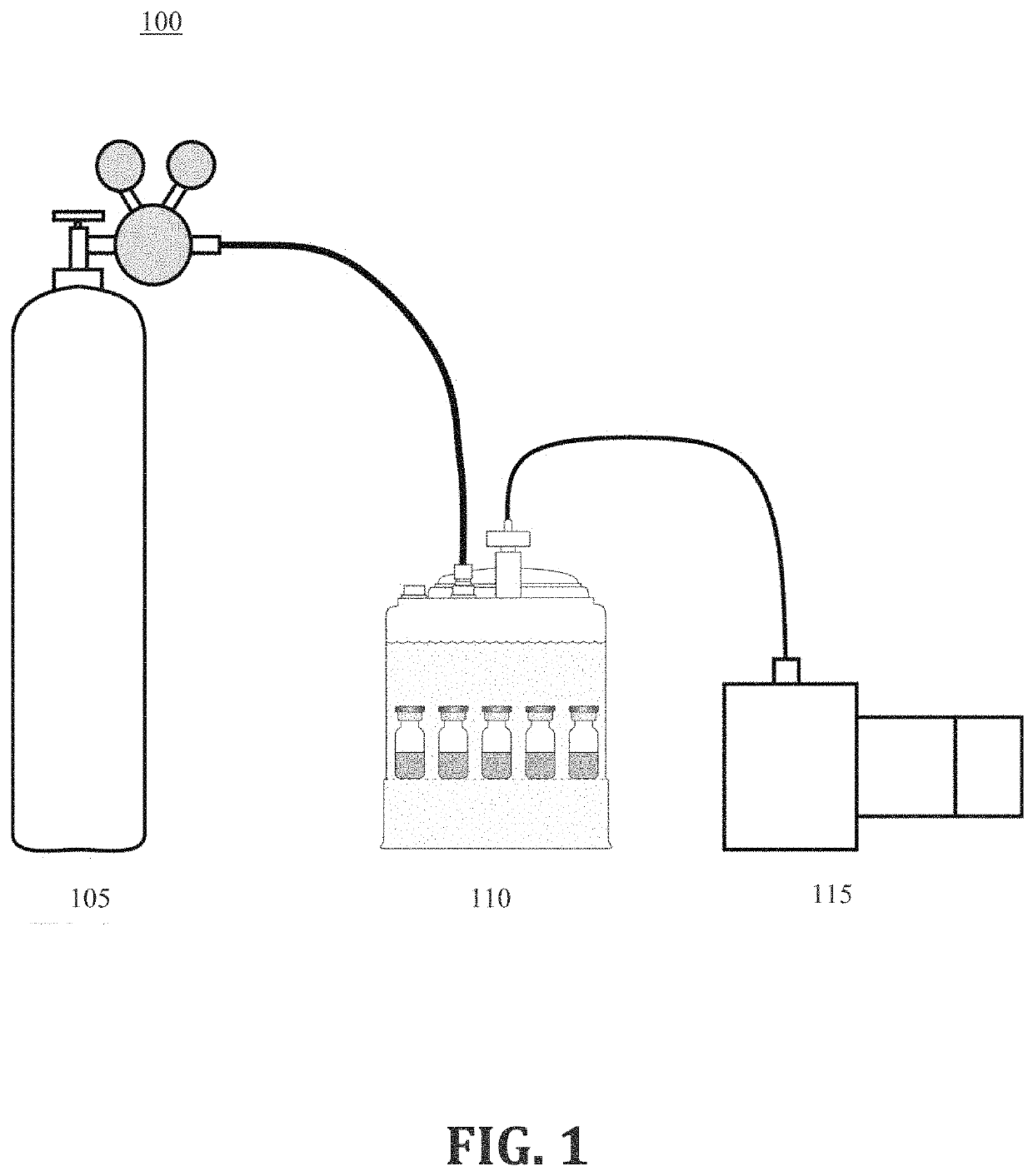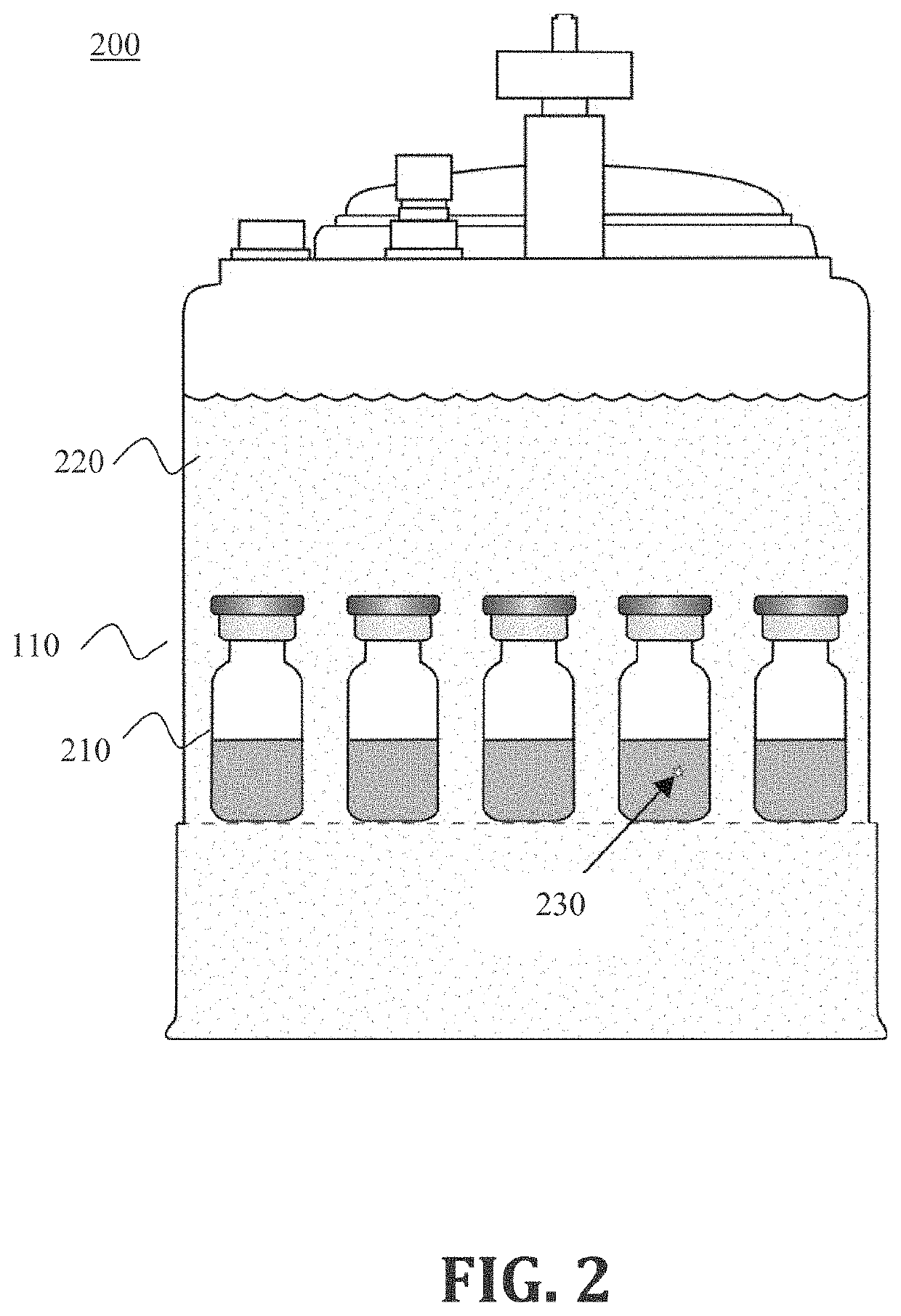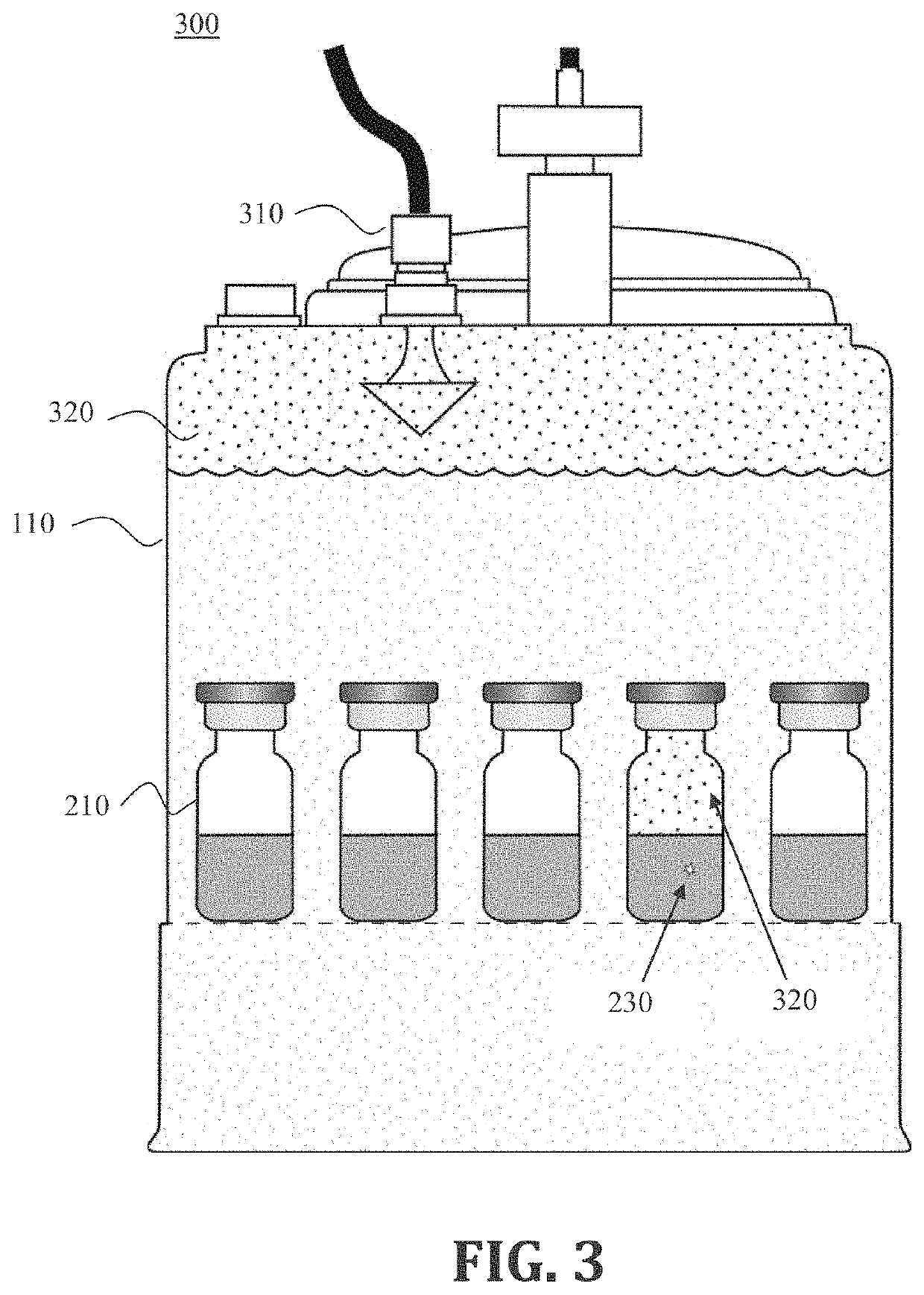Method and apparatus for performing container closure integrity testing
a container and integrity testing technology, applied in the direction of measuring devices, structural/machine measurement, instruments, etc., can solve the problems of lack of sensitivity, preventing the exchange of liquid or gas, and subjective testing, so as to reduce the surface tension and high sensitivity of headspace analysis
- Summary
- Abstract
- Description
- Claims
- Application Information
AI Technical Summary
Benefits of technology
Problems solved by technology
Method used
Image
Examples
Embodiment Construction
[0040]Through one or more of its various aspects, embodiments and / or specific features or sub-components of the present disclosure, are intended to bring out one or more of the advantages as specifically described above and noted below.
[0041]The present disclosure proposes a method for testing the closure integrity of sealed containers. There are only two requirements on the types of containers to be tested: First, at least part of each container is optically transparent and partially filled with gas or at vacuum, thereby allowing the transmission of near-infrared light through the container; and second, each containers is capable of withstanding some amount of overpressure, and in some cases a partial vacuum, on an order of magnitude that is typically experienced during container shipment via air or ground freight.
[0042]Referring to FIG. 1, a schematic diagram 100 of components of a leak testing apparatus is illustrated, according to an exemplary embodiment. The components include ...
PUM
 Login to View More
Login to View More Abstract
Description
Claims
Application Information
 Login to View More
Login to View More - R&D
- Intellectual Property
- Life Sciences
- Materials
- Tech Scout
- Unparalleled Data Quality
- Higher Quality Content
- 60% Fewer Hallucinations
Browse by: Latest US Patents, China's latest patents, Technical Efficacy Thesaurus, Application Domain, Technology Topic, Popular Technical Reports.
© 2025 PatSnap. All rights reserved.Legal|Privacy policy|Modern Slavery Act Transparency Statement|Sitemap|About US| Contact US: help@patsnap.com



